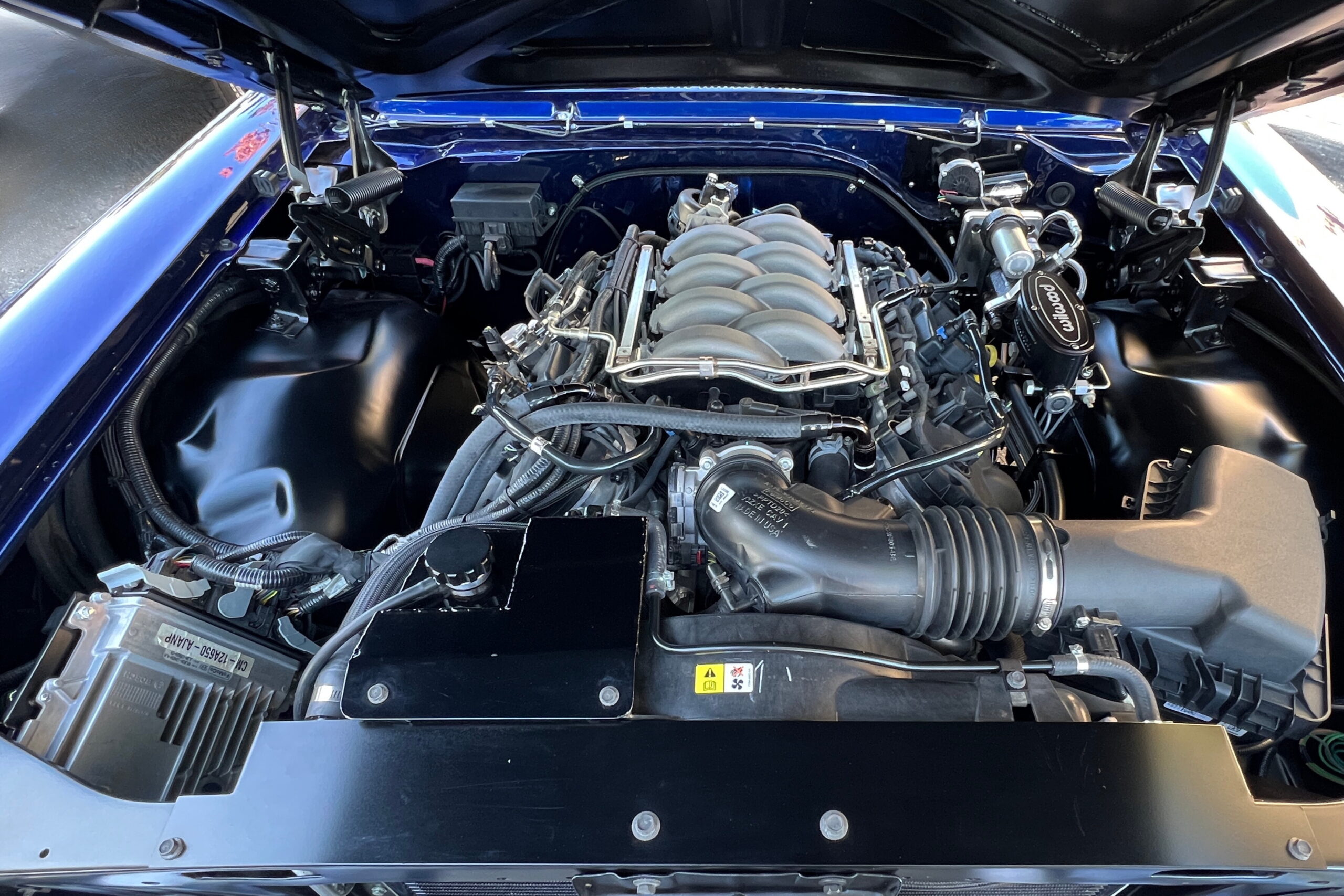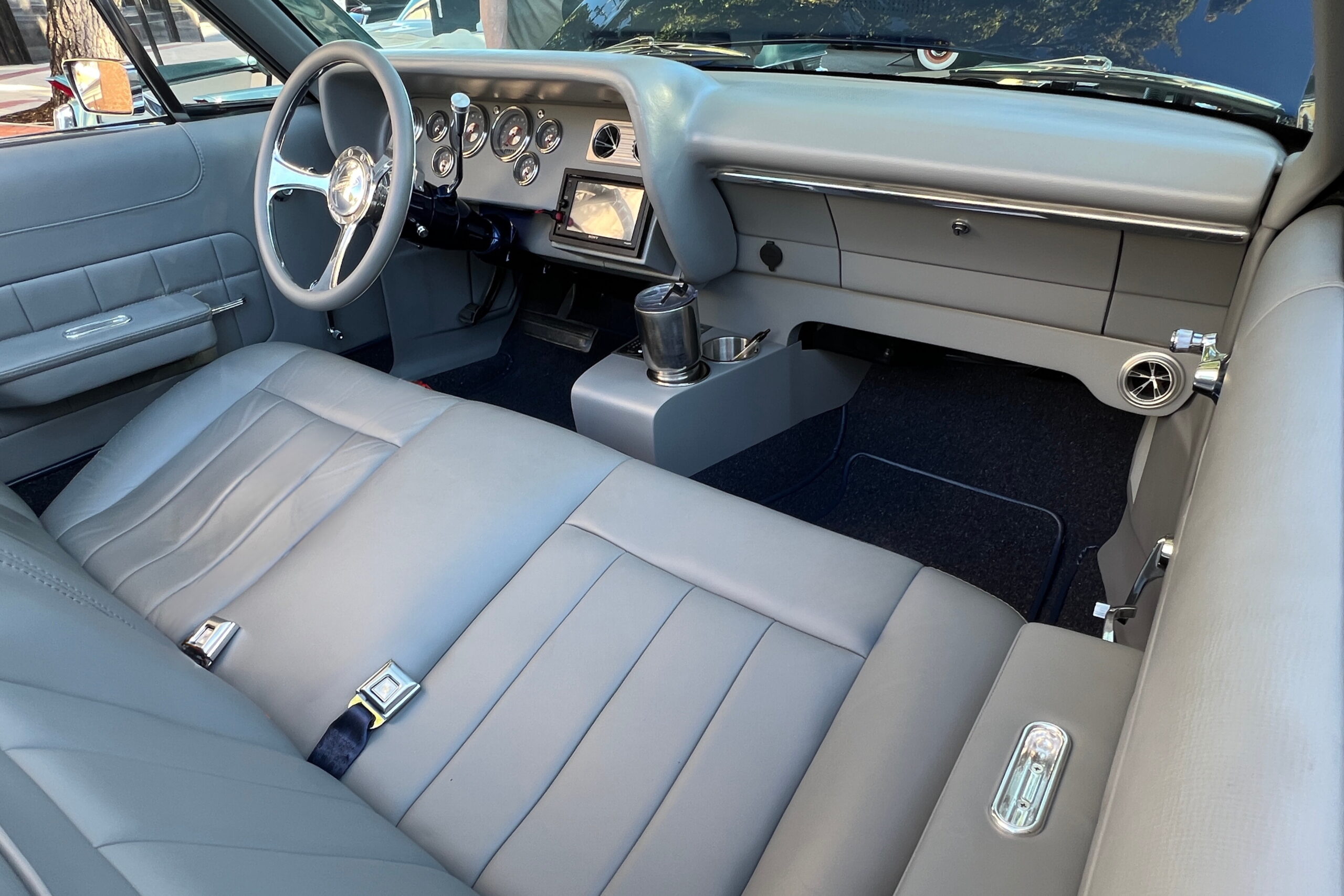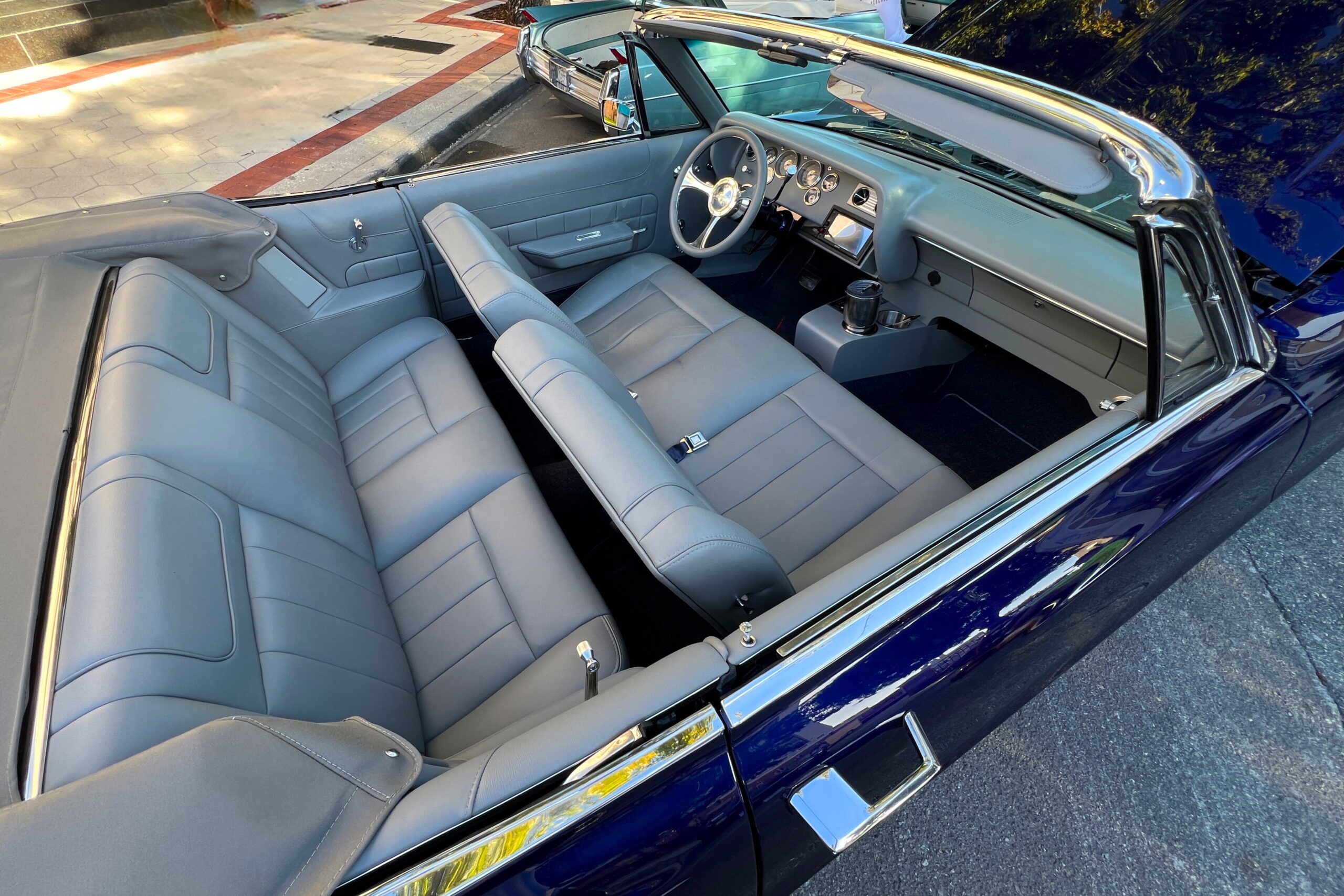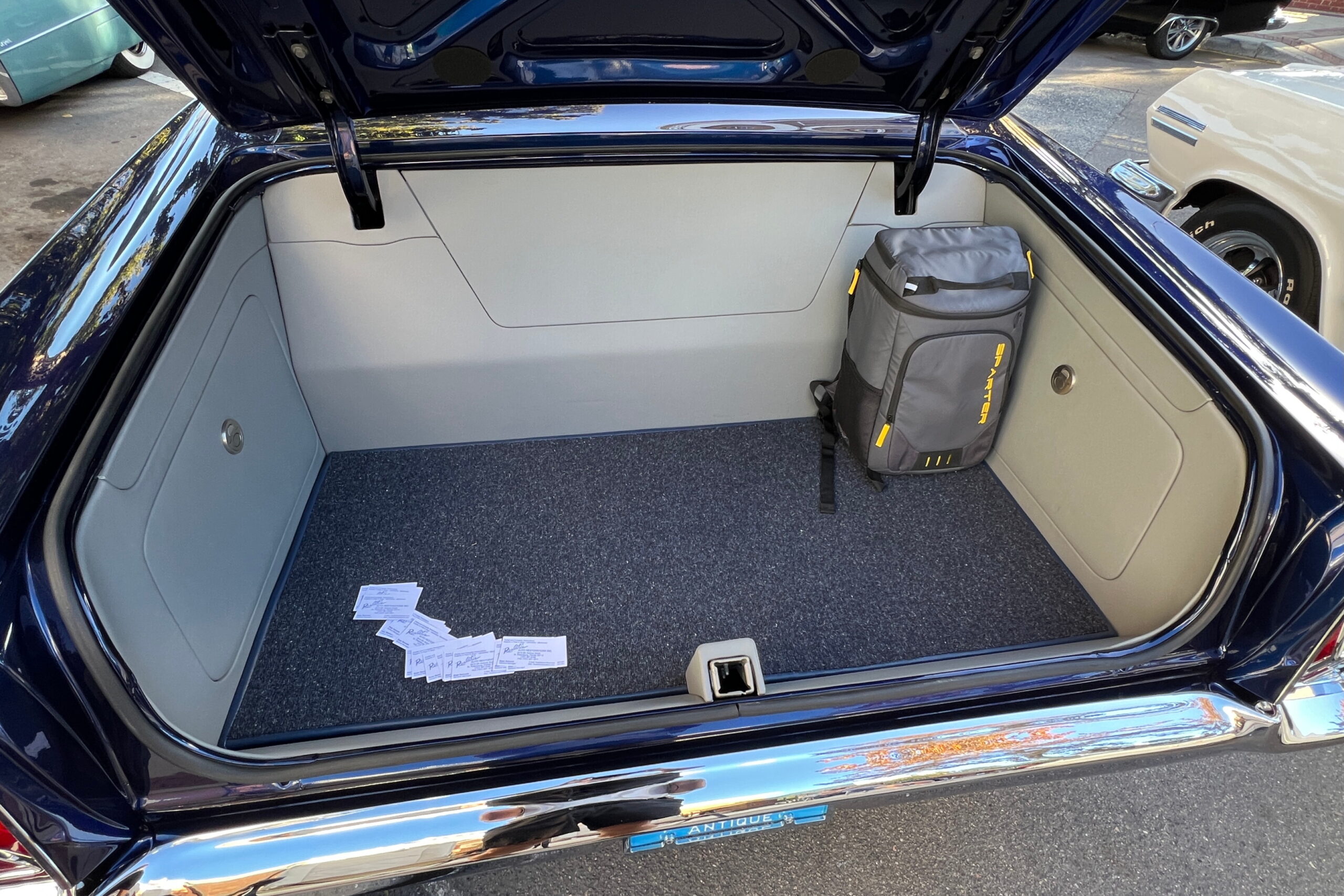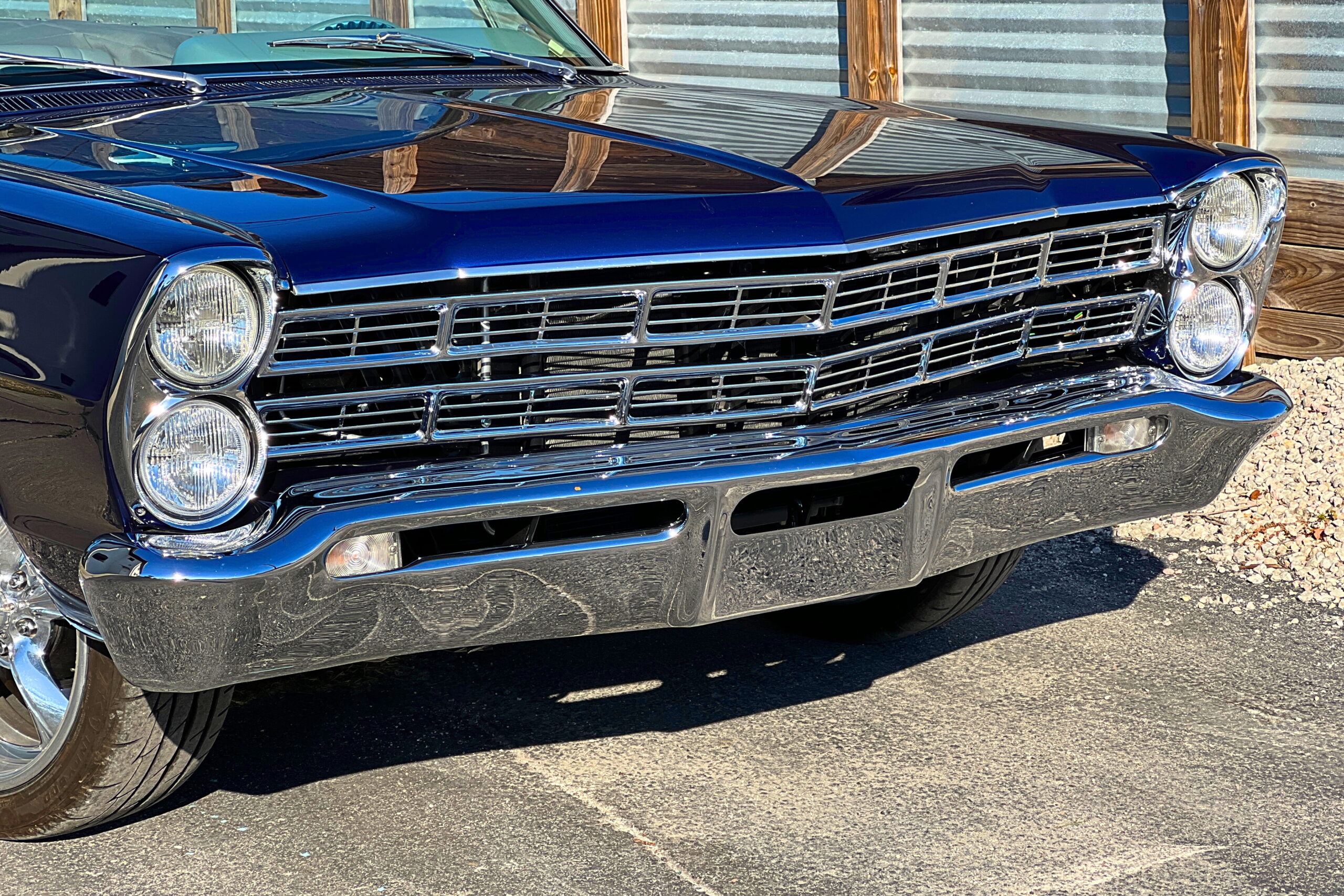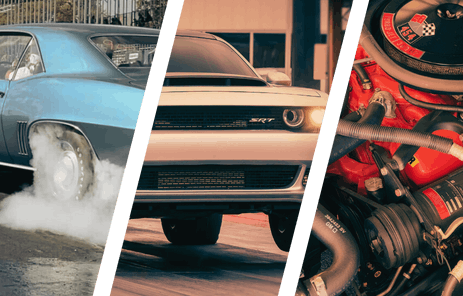Factory big car performance had mostly gone away by 1967. Midsize muscle and pony cars had made rides like 427 Ford Galaxies and 427 Chevy Impalas obsolete virtually overnight. It was pretty much Mustang this and GTO that by the Summer of Love. Yes, you could still get a 1967 Galaxie 500 with a dual-quad 427 FE, but they were about as fashionable then as short hair and Lawrence Welk music.
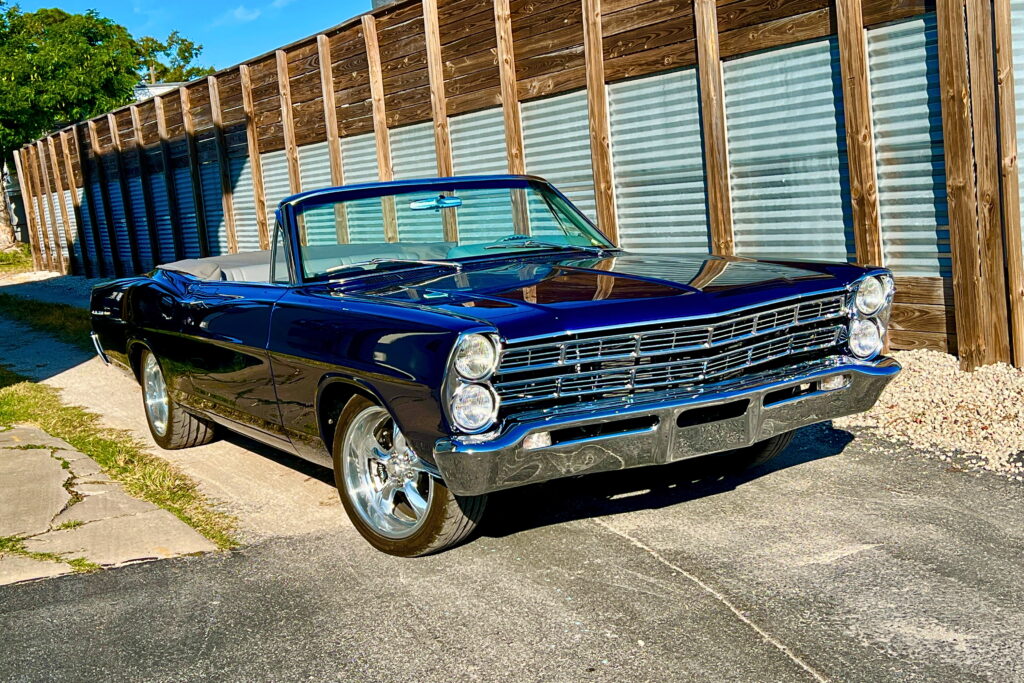
Still, there was a lot to be said for the 1967 Galaxie 500 (and its more luxurious stablemate, the LTD). It was incredibly large, perfectly capable of hauling around a family of six — even in the two-door body. The trunk was large enough to swallow up said family’s luggage and belongings for a long vacation, and available engines like 390 and 428 were strong enough to haul a boat or camper at the same time.
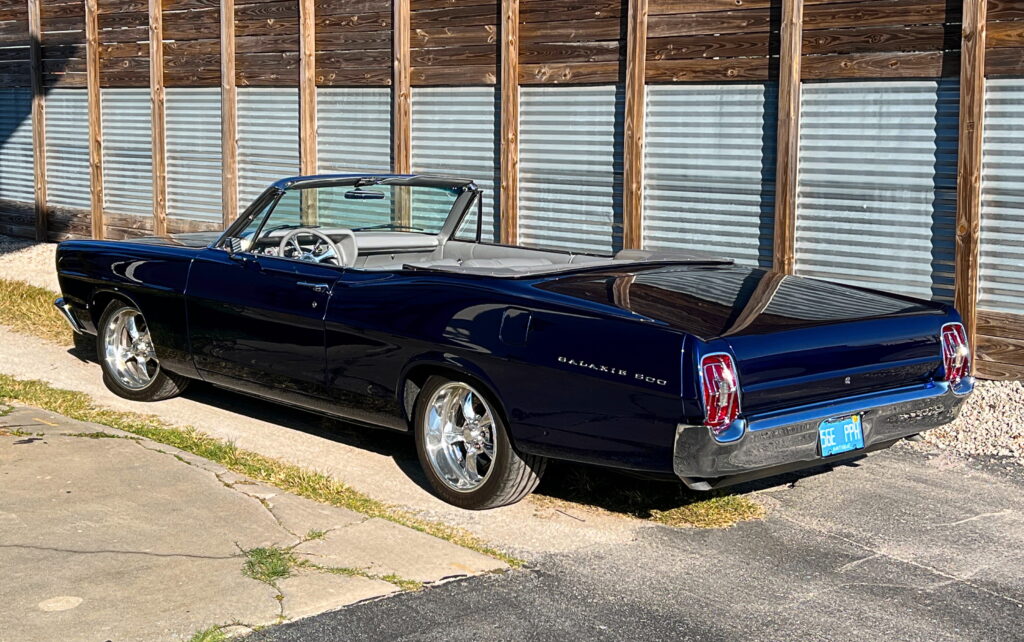
For those keeping track, only 89 427 Galaxies were sold in 1967 out of 952,553 full-size Fords. Nineteen of them were W-code 410-horsepower models with a single four-barrel carb, while the other 70 were R-codes with two four-barrels and 425-horsepower.
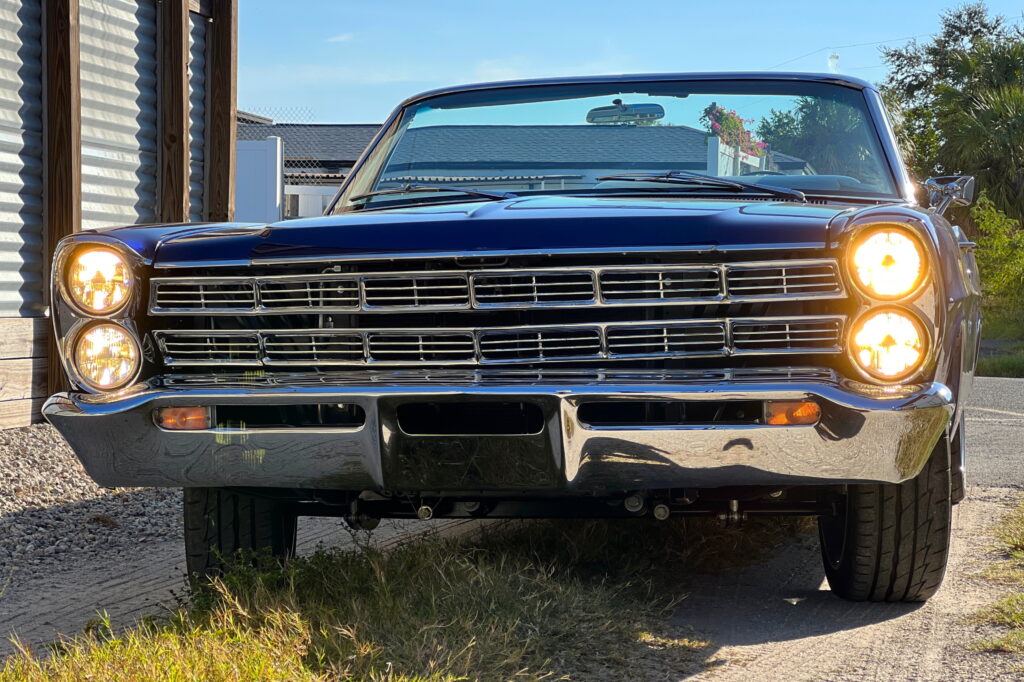
That being said, the 1967 Galaxie 500 was still a sporty looking ride in two-door hardtop and convertible trim. Stacked headlights in a three-pronged grille, that slick fastback roofline, and large, rectangular taillights made for an impressive looking automobile. And for the blue-collar customers that bought these affordable cars, they were quiet, richly appointed, and just floated down the road. A little bit of overtime and you could opt for such niceties as air conditioning (a fairly high-ticket item then), automatic transmission and power brakes. It could deliver Lincoln-style and champagne comfort on a beer-style pocketbook.
We hadn’t given this model much thought lately, so seeing this Kona Blue ragtop at a show recently really got our attention — especially when we caught a glimpse of that 5.0-liter Coyote engine under the long hood. This car was built by Sage Samuels and his crew at Realistic Auto Restorations in St. Petersburg, Florida, and it impressed us immediately.
The Galaxie 500 started life, as most did, as a family vehicle. All the owner’s kids learned to drive on it and let’s just say it suffered battle scars from the experience. But the decision was made to keep it. Well, not just keep it, but turn it into the equivalent of a 2025 Galaxie 500.
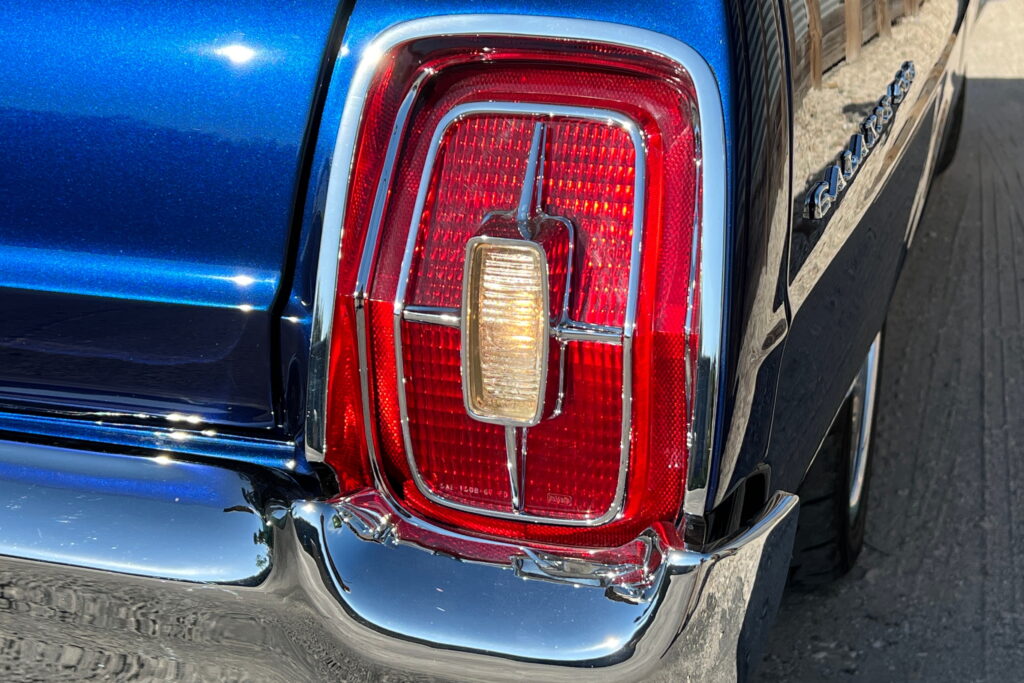
“It ended up becoming a full chassis replacement car, Coyote Gen 3 engine, 10-speed transmission, A/C — anything you can think of,” said Sage. “It’s gonna do anything the owner wants. He has a house in Connecticut and he can drive there and not think twice about the drive”
Sage’s parents started Realistic Auto Restorations in 1978, so he literally grew up in the business. The company’s reputation is such that people do bring him projects from all over the country. Yes, the Coyote and 10-speed are physically large, but there’s plenty of real estate in a full size Ford of this era in which to transplant it.
The four-cam Coyote’s 460 SAE net horsepower is far more than any Ford came with in 1967 and the 10-speed is a perfect match whether you want hard, rapid upshifts, precise downshifts or smooth highway cruising at low RPM. It’s a monster out of the whole and cruises effortlessly at speed.
One thing Sage noted was how necessary it is to get the mass-air sensor properly located to ensure it runs properly and idles smoothly. Unlike a lot of hot rods, this thing looks like a factory installation when you pop the giant hood. The airbox takes the exact same angle as it would on a factory 5-liter. The computer is mounted in the front passenger-side corner of the engine bay.
The radiator is oversized so it behaves like a factory install, with two overflow tanks. It has a Hydratech booster for the brakes. Speaking of which, the heavy Galaxie relies on 14-inch Wilwood brakes with six-piston calipers up front and 13-inch rotors and four-piston calipers in the rear. That’s more than enough for this giant ragtop.
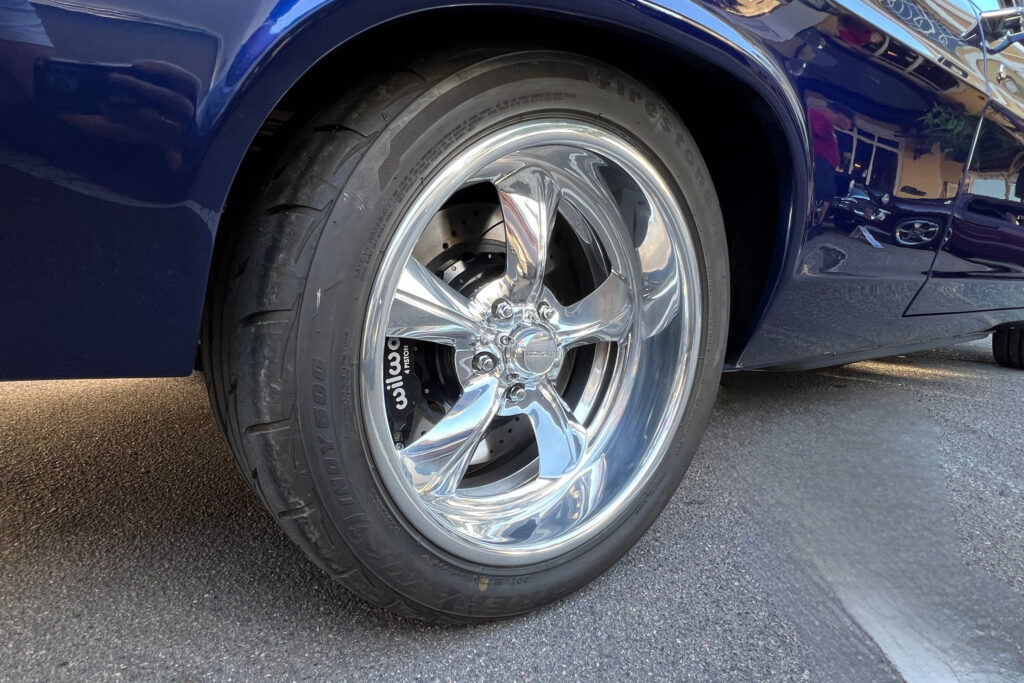
Realistic took a custom chassis with a four-link suspension and nine-inch rearend and modified it to work under the Ford. The rear houses 3.70 gears and an Eaton Detroit TruTrac differential. The owner specified the installation of a Line-Loc should the owner ever get the bug to do burnouts around his neighborhood. (The activation button is on the side of the console.)
Most of the factory trim was removed to clean up the exterior. Only the Galaxie 500 nomenclature on the rear fenders was retained. The stock grille was chrome plated for extra pop and it really stands out with the deep, dark Kona Blue paint. In fact, all the chrome was redone. The bumpers were shaved and all the hardware is hidden
Inside, precious little was left stock. The bench seats were encased in sumptuous Garrett leather and custom embossed leather inserts were made for the door panels. The factory horizontal speedometer and gauges were pitched for round dials that communicate with the factory electronics. Restomod Air keeps the passengers comfortable. It has a Sony head unit in a high-end Focal system (bluetooth capable) with hidden 10-inch speakers in the rear. There’s even a back-up camera, which is definitely helpful when that rich convertible top is up. One unusual feature is has crank windows inside because the owner wanted to retain some of the old-car attributes.
The 18-inch wheels are from Schott wrapped in Firestone Firehawk Indy 500 radials (235/45s front and 275/40s in back).
“The ride is very nice,” according to Sage Samuels, the general manager of Realistic. “The owner couldn’t believe how nice the ride was, but it still goes around corners without tilting.”

After thoroughly examining this custom build, don’t you wish Ford would offer something like this today? Full-size performance should make a comeback in something that’s not a truck!
You might also like
SEMA 2025: Trick Rides' All-Carbon Scorched 1969 Mustang Debuts
The Scorched 1969 Mustang by Trick Rides is an all-carbon fiber build from SEMA 2025. It has a Kaase Boss Nine and a custom TMI interior.


